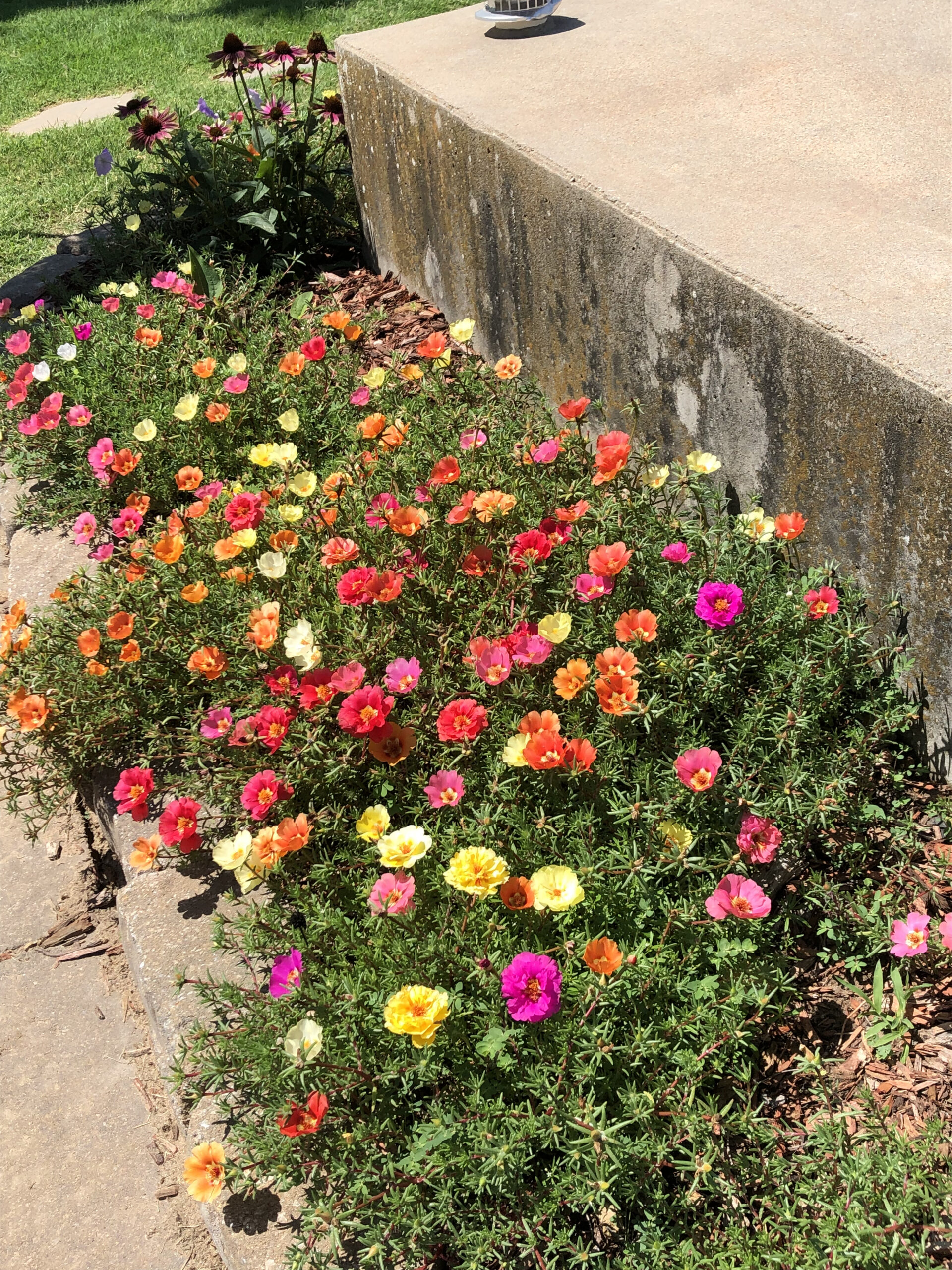
Portulaca
Also known as rose moss, this succulent is a trailing ground cover. It is heat and drought tolerant, as well as, easy to maintain.
|
Double Flowered Mix |
|
Portulaca grandiflora |
|
Easy |
|
Intermediate |
|
3 years if properly stored |
|
Annual |
|
10-14 days |
|
None |
|
Surface Sow |
|
up to 8” |
|
Needs Light to germinate Full sun |
|
Summer |
|
Feb, Mar, May |
|
Yes |

Growing Tips


When to Start
Start indoors: 6-8 weeks before the last frost date. (Mid-Feb – Mid-Mar for Jefferson, GA)
Transplant: After the danger of frost has passed. (May 1 for Jefferson, GA)
Direct Sow: After the danger of frost has passed. (May 1 for Jefferson, GA)
How to Start
Start indoors 6-8 weeks before the last frost date. Portulaca needs light to germinate. Fill cells or pots with sterile, pre-moistened seed starting mix. Surface sow seeds by gently pressing them into the top of the soil. Then place the cells or pots under grow lights. Keep the soil moist but not soggy.
Or direct sow after all danger of frost has passed into full sun and well-draining soil. Gently press into seed starting mix or soil. Keep the soil moist but not soggy.
Care
Portulaca are excellent plants for high heat and they are drought tolerant. Dead-head plant to encourage more blossoms, until you are ready for it to go to seed. It self-seeds very well. Flowers bloom from summer to fall. Some control methods may be needed to keep portulaca plants from becoming invasive to areas where they are not wanted.
An easy growing flower that is heat and dry weather tolerant, this flower takes very little watering. It produces many flowers that honey bees enjoy. My rose moss just hums throughout the summer due to all the honey bees. –LaNita Milligan, 60 years of gardening experience

Pictures by LaNita Milligan Used with Permission

Seed Saving

Isolation Distance
Insect dependent for pollination. Isolate 1/4 mile to prevent cross-pollination.
Instructions
Select healthy, robust plants free of any signs of disease or insect infestation for seeds. Seeds carry the traits of the parent plant. Choose plants that exhibit the traits you wish to preserve. Consider bloom size, color, and shape, as well as blooming time.
Allow the biggest and healthiest blooms to mature on the plant. Cover the seed head with a fine-mesh bag as soon as the flower petals shrivel and die. Use an elastic band to hold the bag in place. This prevents seeds from spilling onto the soil before harvest.
Clip the flower head from the main stem once the seeds are dry and dark. Separate plant debris from the seeds by removing the mesh bag and placing the flower head in a paper bag and shaking to loosen the seeds. Seeds settle to the bottom of the bag. Remove plant debris by hand.
Features
- Attracts pollinators
- Good ground cover
- Easy to grow
- Container friendly
- Double Flowered Mix: Prolific, large blooms in jewel tones. Heat and drought-tolerant.
